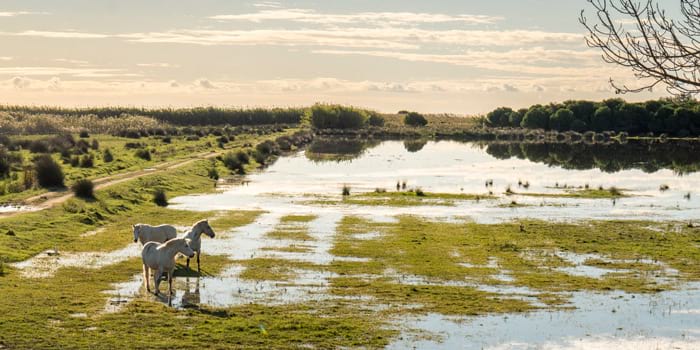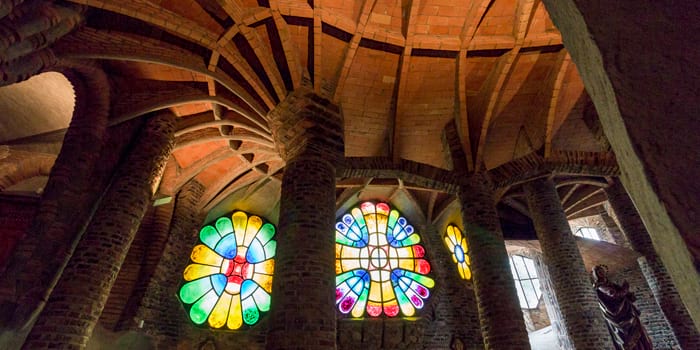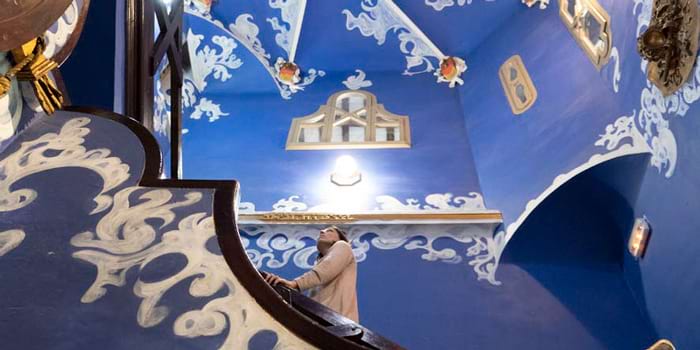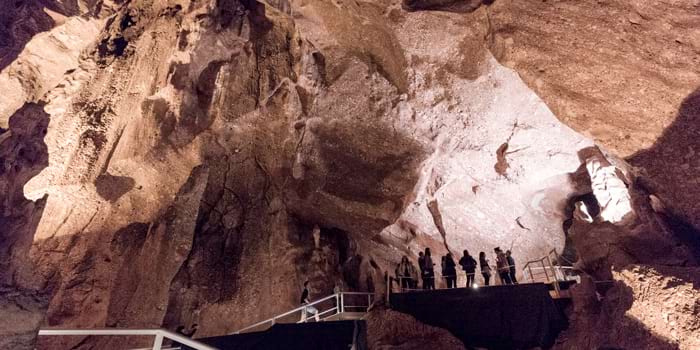
Natural Areas of the Llobregat Delta

Close-up of the Gaudí Crypt of the Colònia Güell

Staircase inside Can Negre

Caves of Montserrat
4 sustainable ideas in the Baix Llobregat region
Do you find that when Friday comes around, you’ve had no time to plan the weekend? Maybe you fancy a change of scenery without getting stuck in motorway traffic. Well, it so happens that you have all sorts of options for enjoying culture and nature respectfully and sustainably, and they’re much closer than you might think. You’re probably already familiar with the sustainable tourism label Biosphere, but you may not yet know about the places we describe below, which are certified as sustainable. They’ll provide you with some unforgettable moments, so let’s discover them!
Before we start, you need to know that the Biosphere label is synonymous with sustainable tourism. By seeking out places that hold this certification (or others that guarantee sustainability) when you book your minibreaks and holidays, you’ll be contributing to a type of tourism that’s essential for taking care of the environment, nature and the people who live there. Sustainable tourism will only be possible if we change our mindset when choosing our destination and experiences. We’ve got a few that we’d like to recommend, but you can find many more here.
1- Natural Areas of the Llobregat Delta
No doubt you’ve heard about the aircraft viewpoint or someone has recommended a bike ride in the Natural Areas of the Llobregat Delta. This delta, where the water of the Llobregat River flows into the Mediterranean Sea after travelling hundreds of kilometres, is a natural area to be enjoyed in silence, on a bicycle or on foot (bicycles are not allowed in certain sections but at the entrance to them there are bike parking facilities). This network of protected areas with various suggested routes is home to an amazing amount of biological diversity: lagoons, wetlands, pine forests, dunes and unspoiled beaches stretching along the last few metres of the Llobregat River. It’s a landscape inhabited by all kinds of water birds, not to mention horses and even a flock of sheep that graze freely there. A unique area just a stone’s throw away!
2- Gaudí Crypt of the Colònia Güell
Also known as the Crypt of the Colònia Güell, this monument, listed as a World Heritage Site by UNESCO, is an essential element for understanding the universe of Antoni Gaudí and his Sagrada Família Basilica. Considered a full-scale trial run for what would become the architect’s most famous work, the Gaudí Crypt contains all of his innovative architectural and design concepts, such as his inverted catenary curve arches, his special use of light and the integration of architectural constructions within the natural environment.
This architectural jewel was supposed to be the lower nave of a much more ambitious construction that never came to fruition after the Güell family, which owned the colònia (model village) that bore its name, pulled the plug on the project. The Gaudí Crypt, a must-see attraction, is set within an old model village made up of low terraced houses and quiet streets that takes you back in time and complements this wonderful visit.
3- Centre Jujol - Can Negre
Josep Maria Jujol i Gibert, a Catalan modernist architect and close collaborator of Gaudí, carried out the full refurbishment of Can Negre, a traditional 18th-century farmhouse, turning it into the summer residence of Pere Negre i Jover in the town of Sant Joan Despí. The result of his work was an original dwelling characterised by undulating forms and bright colours. Visiting it is like entering a fairytale.
There are plenty of options for visits. Departing from Can Negre, the Jujol Route follows in the footsteps of the man who served as a municipal architect for 20 years. Meanwhile, on the 360º immersive tour, the old owners of the house tell you about its history. Moreover, several exhibitions are also held there.
4- Caves of Montserrat
Montserrat Mountain looks spectacular enough from the outside, but just wait until you see it from the inside. The Caves of Montserrat, also known as the Salnitre (Nitre) Caves are a spectacle of nature located right next to the charming town of Collbató, just 30 minutes from Barcelona.
To get there, you’ll have to climb up quite a few steps, which gradually reveal the entire landscape of the region, stretching to the sea. The climb is well worth it because the first impression of the caves is truly breathtaking. The caves are an extraordinary natural legacy formed many thousands of years ago. On the 400-metre route, you’ll discover a fascinating geological process in the form of stalactites, stalagmites and columns. During the visit, you’ll also hear about all the people who’ve inhabited the caves over the years and you’ll get to experience an impressive projection mapping show.
More information:
Turisme Baix Llobregat Natural Areas of the Llobregat Delta
Gaudí Crypt of the Colònia Güell
Centre Jujol - Can Negre
Caves of Montserrat
Sustainable Tourism





